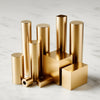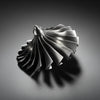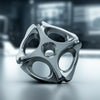Unlacquered Brass Hardware: Patina Timeline, Care, And Picks

Unlacquered Brass Made Clear
What unlacquered brass really means
Ever wondered why some homes have hardware that looks like it’s telling a story—changing color, gaining depth, and looking better with age? That’s the magic of unlacquered brass hardware. But what is unlacquered brass, exactly? Simply put, it’s solid brass that’s left uncoated—no lacquer, no clear protective layer, and no PVD treatment. This leaves the surface exposed to air, moisture, and touch, allowing it to develop a natural patina over time. Unlike lacquered brass, which is sealed to maintain a uniform look, unlacquered brass is all about evolution and character.
This living finish is prized by designers and homeowners alike for its ability to change and mature. Each piece, whether it’s a cabinet knob or a door handle, will react uniquely to its surroundings. In high-traffic areas, you’ll notice the hardware deepening in tone or developing subtle streaks and spots—these are not defects, but part of the story your home tells over time.
Where unlacquered brass shines in the home
If you’re considering unlacquered brass cabinet hardware or thinking about swapping out door knobs, it helps to know where this finish truly excels. Its warm, golden hue and tactile feel make it a favorite for:
- Kitchen cabinetry—think pulls, knobs, and hinges
- Interior door sets and unlacquered brass door knobs
- Bathroom accents, including towel bars and faucets
- Entryway hardware, like door levers and escutcheons
- Lighting fixtures and decorative hardware
Unlacquered brass pairs beautifully with a range of cabinet styles, from sleek modern to traditional shaker. Its ability to bridge old-world charm and contemporary lines means it complements both minimalist and ornate interiors.
How unlacquered compares to other brass looks
It’s easy to confuse unlacquered brass with other finishes. Here’s the distinction:
- Lacquered brass: Sealed with a clear coating to maintain a shiny, uniform gold appearance. Less prone to fingerprints but can wear unevenly over time.
- Unlacquered brass: No protective coating, so it reacts naturally to its environment. Expect visible changes, especially in high-touch spots. Each piece develops a unique patina.
- PVD-coated brass: Uses a high-tech process to create a hard, durable surface. The look stays consistent, but lacks the evolving character of raw brass.
Choosing unlacquered brass hardware means embracing a finish that’s alive. It’s not for everyone—if you want a flawless, fingerprint-free look, lacquered brass or other coated options might be a better fit. But if you love the idea of hardware that matures with your home, this is a finish that rewards patience and care.
Patina is a feature, not a flaw—embrace the change as part of your home’s story.
Before you commit, consider your maintenance comfort level. Unlacquered brass will show fingerprints, water spots, and tonal shifts, especially at first. Regular, gentle cleaning helps, but some unevenness is inevitable. If you appreciate a finish that celebrates age and use, you’ll love the living history that unlacquered brass brings to your space.
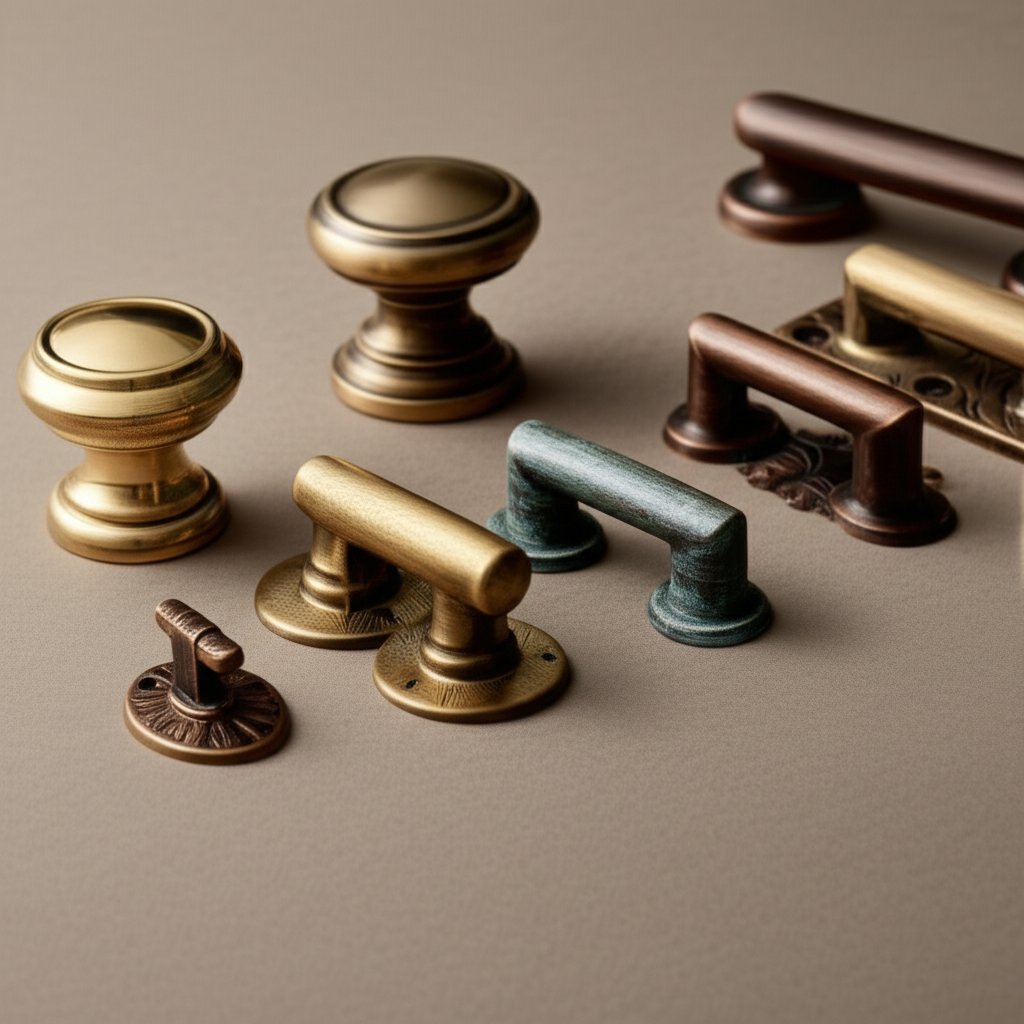
How Unlacquered Brass Evolves
How patina forms on brass
When you install unlacquered brass hardware, you’re not just adding a metallic accent—you’re inviting a living finish into your home. But what exactly happens as this finish matures? The transformation is all about chemistry: as soon as unpolished brass is exposed to air, moisture, and touch, it begins to oxidize. This process forms a thin, protective layer—called a patina—that deepens in color and complexity over time. The oils from your hands, humidity in the air, and even the pH of your cleaning water all play a role in how your hardware changes. Imagine your kitchen pulls quietly recording every touch, every sunny afternoon, and every splash from the sink.
From bright to burnished—stages of change
Sounds complex? Let’s break down the evolution of unlacquered brass patina into clear, relatable stages. The journey from bright gold to richly aged unlacquered brass is gradual, and each stage adds a unique layer of character:
-
Day 1–30: Fresh from the factory
Polished unlacquered brass starts out with a luminous, soft gold glow. In these first weeks, you’ll notice fingerprints and water spots appear quickly—this is normal and signals the start of the patina process (source). -
1–6 months: Warmth and contrast emerge
As the weeks pass, high-touch areas begin to mellow into honey and amber tones, while less-used edges stay brighter. This creates a beautiful, lived-in contrast that’s impossible to fake with coated finishes. -
6–24+ months: Depth and richness
The patina matures into deeper caramel or brown hues, sometimes with subtle streaking or mottling. In humid or coastal environments, you may spot greenish verdigris in seams—a natural part of aged unlacquered brass hardware. -
Beyond 2 years: Aged, soulful character
With time and gentle care, the finish settles into a deep, richly variegated gold-bronze. Each piece tells a story—edges darken, contact points stay a touch lighter, and the overall look becomes more unified and authentic.
Why some pieces age faster than others
Not every piece of hardware ages at the same pace. Several factors influence the timeline and appearance of unlacquered brass over time:
- Touch frequency: The more you use it, the faster it changes. Knobs and pulls on busy cabinets will develop patina quicker than rarely-used hardware.
- Environment: Humidity, coastal air, and even city pollution (like sulfur compounds) can accelerate oxidation and deepen color faster.
- Cleaning habits: Frequent, gentle cleaning helps maintain evenness, while harsh scrubbing can create uneven patches. Consistency is key.
- Sunlight: Direct sun can brighten patina or create subtle tonal shifts, especially on exposed surfaces.
- Water chemistry: Hard water or acidic cleaners can leave mineral spots or accelerate patina—always wipe hardware dry after cleaning or splashes.
Consistent gentle care—like regular wipe-downs and avoiding harsh chemicals—produces a more even, beautiful patina over time.
Embracing the journey of aged brass
The beauty of aged unlacquered brass lies in its unpredictability. No two pieces will age exactly alike, and that’s the charm. Whether you prefer the look of fresh, polished unlacquered brass or want to let your hardware develop a deep, soulful patina, the choice is yours. If you ever wish to reset the look, a quick polish can restore much of the original glow—yet the story of your home will continue to be etched into the metal with every passing day.
Next, we’ll compare lacquered and unlacquered finishes so you can decide which look and maintenance level fits your space best.
Lacquered vs Unlacquered Brass
Quick tradeoffs at a glance
Trying to choose between lacquered vs unlacquered brass for your next project? Imagine two pieces of hardware: one that stays bright and polished with little effort, and another that evolves—gaining warmth, depth, and character as it ages. The choice comes down to your style preferences, tolerance for change, and maintenance comfort.
| Feature | Lacquered Brass | Unlacquered Brass | Unlacquered Polished Brass |
|---|---|---|---|
| Maintenance Needs | Low – wipe with damp cloth, avoid abrasives | Moderate – regular dusting, occasional gentle polish | Moderate – polish to maintain shine or let patina develop |
| Appearance Over Time | Consistent, glossy or satin finish | Changes: develops unique patina, darkens, gains character | Starts bright; can be kept shiny or allowed to age |
| Fingerprint & Touch Behavior | Resists fingerprints and tarnish | Shows fingerprints, water spots, and tonal shifts | Shows prints, but can be easily buffed out if desired |
| Best Use | High-touch, modern, or low-maintenance spaces | Traditional, vintage, or spaces embracing change | Flexible: can suit both classic and transitional rooms |
| Interior/Exterior Suitability | Ideal for interior use; exterior use possible but may require re-lacquering | Best indoors; outdoor use accelerates patina | Same as unlacquered: patina forms faster outdoors |
| Repair & Restoration | Requires full re-lacquering if damaged | Easy spot cleaning or polishing; can restore shine | Buffing restores original glow; patina can be reset |
| Long-Term Value | Retains original look with minimal effort | Gains value for those who appreciate aging and uniqueness | Offers the flexibility to choose between shine and patina |
Best-use scenarios by room
- Kitchens & Bathrooms: Lacquered brass excels in busy, splash-prone spaces where you want hardware to stay bright and easy to clean. Unlacquered brass is perfect if you love a storied, evolving look and don’t mind occasional water spots or fingerprints.
- Living Rooms & Bedrooms: Either finish works, but unlacquered brass (or unlacquered polished brass for a brighter start) adds warmth and pairs beautifully with wood, linen, and stone.
- Entryways: Lacquered brass offers reliable shine for front doors and high-traffic zones. Unlacquered brass will develop a rich patina, especially on handles and knobs, giving your entrance a welcoming, lived-in feel.
Cost and effort considerations
Wondering about the bottom line? While the price difference between lacquered and unlacquered brass is often minimal, the real tradeoff is in time and attention. Lacquered brass is a set-it-and-forget-it finish—ideal if you want consistency and minimal upkeep. Just dust and wipe occasionally, and you’re done.
Unlacquered brass (and especially unlacquered polished brass) rewards those who enjoy a hands-on approach. You’ll need to dust regularly, polish occasionally, and accept that your hardware will change—sometimes unevenly. But the payoff is a finish that’s truly yours, shaped by your home’s unique rhythms and routines.
Choose lacquered brass for lasting consistency, or unlacquered brass if you love a finish that tells a story and can be refreshed with a simple polish.
As you weigh lacquered brass vs unlacquered brass, consider your willingness to embrace change, your preferred look, and how much time you want to spend on upkeep. Next, we’ll dive into care routines—so you can keep your chosen finish looking its best for years to come.
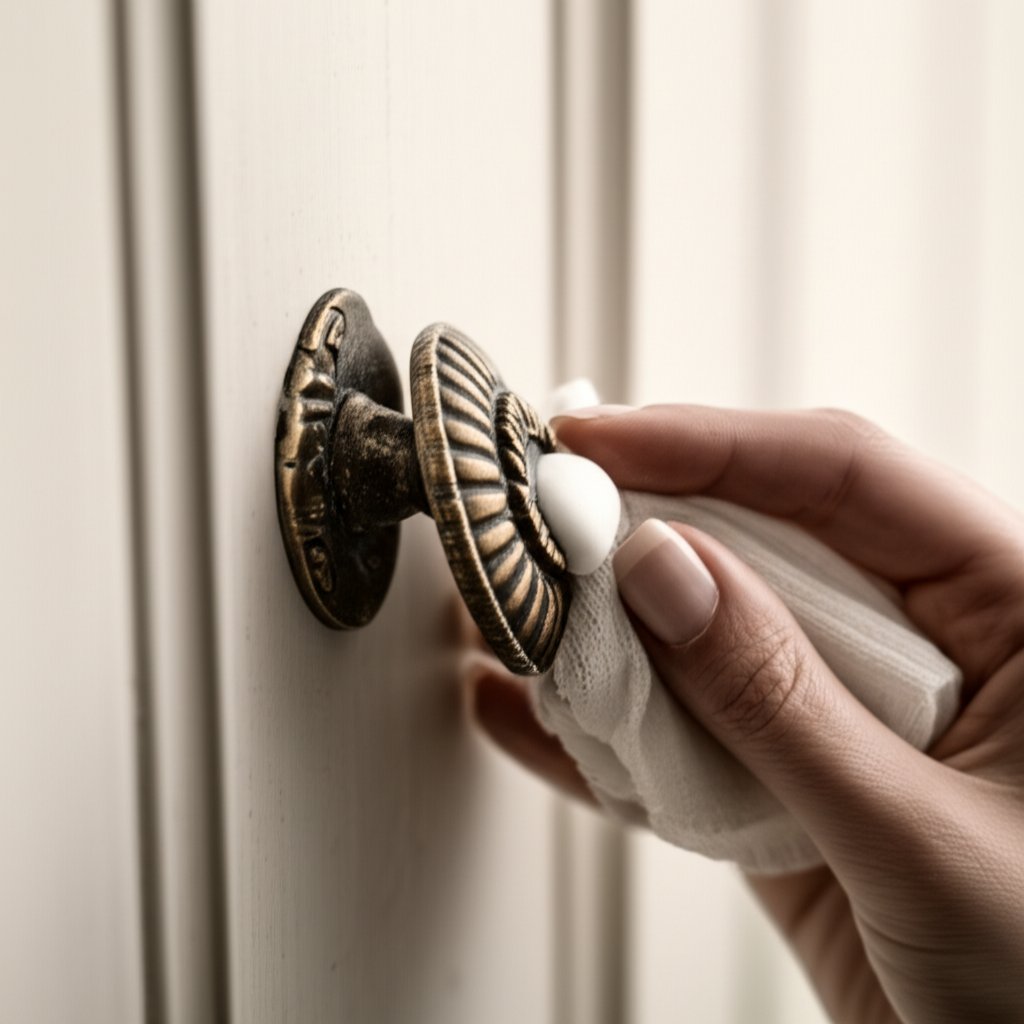
Cleaning and Polishing That Protects Your Finish
Routine cleaning made simple
Ever noticed how unlacquered brass door hardware and unlacquered brass pulls seem to collect fingerprints and spots just from daily use? That’s the beauty—and the challenge—of a living finish. But don’t worry: keeping your hardware looking its best doesn’t require harsh chemicals or complicated routines. Here’s how to clean unlacquered brass so it stays beautiful and ages gracefully:
- Dust or wipe regularly—Use a soft, dry microfiber cloth to gently remove dust and fingerprints from your unlacquered brass knobs, pulls, and handles. This simple step prevents buildup and helps maintain a more even patina (source).
- Wash with mild soap—For occasional deeper cleaning, mix a drop of pH-neutral dish soap in warm water. Dampen a soft cloth, wipe the hardware, and rinse with clean water. Immediately dry with a fresh cloth to prevent water spots.
- Address crevices—For detailed hardware or tight spaces, use a cotton swab lightly moistened with the soapy solution. This works well for intricate unlacquered brass cabinet pull designs.
- Blot dry—never air dry—Moisture can accelerate tarnishing and cause uneven spots. Always blot hardware dry after cleaning.
Safe polishing for brighter brass
If you prefer a brighter look or want to reset the patina, polishing is the way to go. Wondering how to polish brass door hardware safely? Stick to these proven methods:
- Pick a gentle polish—Choose a specialist brass polish (like Brasso or Bar Keepers Friend) or make a DIY paste with lemon juice and baking soda, or vinegar, flour, and salt.
- Apply with care—Use a soft, lint-free cloth to apply the polish. Gently buff in small circles, focusing on areas with heavy tarnish or fingerprints.
- Rinse and dry—Wipe away any polish residue with a damp cloth, then dry thoroughly to prevent new spots from forming.
- Optional: Wax for slower patina—A thin layer of microcrystalline wax can be buffed onto hardware to slow future patina development and make cleaning easier. This is especially helpful on high-touch fixtures like unlacquered brass cabinet pull sets in kitchens or baths.
Safety and compatibility notes
Imagine you’ve just installed beautiful new brass hardware. The last thing you want is to damage it with the wrong product. Here’s what’s safe—and what to avoid:
-
Approved cleaning tools & products:
- pH-neutral dish soap
- Specialist (ammonia-free) brass polish
- Soft microfiber or lint-free cotton cloths
- Cotton swabs for detailed areas
- Microcrystalline wax (optional, for added protection)
-
Avoid near brass or adjacent finishes:
- Bleach or chlorine-based cleaners
- Acidic cleaners (except in controlled, DIY paste recipes)
- Abrasive pads or steel wool
- Ammonia-based products (especially on lacquered brass)
Always test any new cleaner or polish on a small, inconspicuous area first. For safety, wear nitrile gloves when polishing and ensure good ventilation, especially with commercial brass polishes.
Gentle, frequent maintenance preserves an even patina and protects your hardware for years to come.
Whether you’re caring for unlacquered brass knobs or a statement unlacquered brass cabinet pull, the key is consistency and a light touch. With the right routine, your hardware will age beautifully and remain a highlight in your home’s design. Next, we’ll cover how to handle common issues like streaks, verdigris, and scratches—so you’re prepared for anything your living finish throws your way.
Troubleshooting and Restoration That Works
Treating verdigris and corrosion safely
Noticed green spots or streaks on your unlacquered brass door hinges or unlacquered brass drawer pulls? That’s verdigris—a natural byproduct of brass reacting with moisture and air. While some patina is desirable, verdigris can look uneven or even damage the finish if ignored. Here’s how to deal with it while keeping your hardware safe:
-
Start with gentle cleaning
Wipe the affected area with a soft, dry cloth to remove any loose dust or debris. For light verdigris, this alone may improve the look. -
Use a mild soap solution
Mix a few drops of mild dish soap in warm water. Dampen a microfiber cloth or soft brush, then gently clean the brass in circular motions. Rinse with clean water and dry immediately. -
Spot-treat stubborn verdigris
If greenish deposits persist, try a cleaning stone or a homemade paste (lemon juice with baking soda or vinegar with flour and salt). Apply with a cotton swab for targeted cleaning. Let it sit for 10–15 minutes, then rinse and dry thoroughly. -
Polish if needed
If the finish still looks dull, use a specialist brass polish on a soft cloth. Buff gently, focusing only on the affected area to avoid removing too much patina from surrounding surfaces. -
Seal for extra protection
Consider applying a thin layer of microcrystalline wax to slow future tarnishing and make cleaning easier, especially on high-touch items like unlacquered brass bin pulls and unlacquered brass cup pull hardware.
Always mask adjacent finishes and test any polish or cleaner on a hidden area first to avoid unwanted damage.
Smoothing scratches and swirls
Imagine you spot a fine scratch on your favorite unlacquered brass bin pull or a swirl on a unlacquered brass cup pull. Before you panic, know that most minor marks can be minimized with careful attention:
- Clean first—Remove dust and debris with a soft cloth to prevent further scratching during treatment.
- Buff gently—Use a non-abrasive, lint-free cloth and a small amount of brass polish. Rub in the direction of the grain, not in circles.
- For deeper scratches—If the scratch is still visible, repeat the process. Never use steel wool or abrasive pads, as these can make the problem worse (source).
- Finish with wax—A light coat of wax can help mask minor imperfections and unify the sheen.
Re-polish or embrace the patina?
Sometimes the toughest decision is whether to restore hardware to its original brightness or let it age naturally. Here’s a quick Pros/Cons breakdown to help you decide:
-
Spot-Treatment
- Pros: Preserves most of the existing patina, less risk to surrounding finishes, faster and easier.
- Cons: May leave slight color variations, not suitable for severe or widespread tarnish.
-
Full Repolish
- Pros: Restores a bright, uniform finish, removes deep tarnish and stubborn stains.
- Cons: Labor-intensive, removes the unique character of aged brass, risk of over-polishing if not careful.
When in doubt, remember: many collectors and designers value the evolving look of unlacquered brass bin pulls and unlacquered brass cup pull hardware. Unless the hardware is stained, sticky, or structurally compromised, it’s often best to let the patina be part of your home’s story.
When to call a professional
For deep pitting, severe corrosion, or if your unlacquered brass door hinges or unlacquered brass screws are part of a complex assembly, consult a restoration expert. Professional help is especially wise for antique or valuable pieces where aggressive cleaning could cause permanent damage.
With these troubleshooting steps, your unlacquered brass hardware—from door hinges to bin pulls—can stay beautiful for years to come. Next, we’ll explore how different rooms and environments shape the care and aging of your brass pieces, so you can plan confidently for kitchens, baths, and beyond.
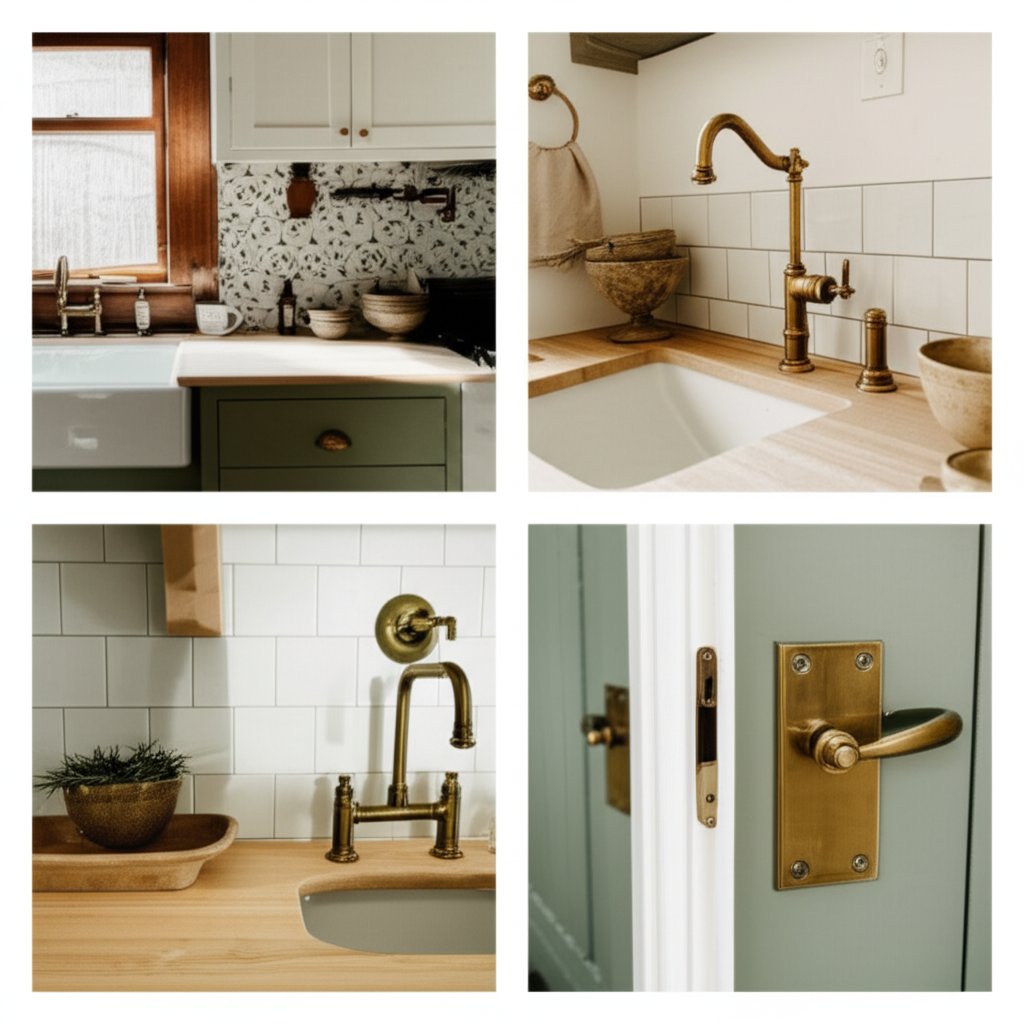
Room by Room Recommendations
Kitchens and High-Touch Zones
Thinking about adding unlacquered brass kitchen hardware to your space? Imagine the warmth of golden pulls and knobs set against classic cabinetry or a cozy cottage kitchen. Kitchens are where this living finish truly stands out, but they’re also high-traffic, high-moisture zones. Here’s what to consider:
- Cabinet pulls and knobs: Ideal for drawers, cabinets, and pantries. They develop a beautiful patina from frequent use and cleaning (source).
- Unlacquered brass sink faucet: A statement piece that will show water spots and fingerprints but gains character with every use. Dry after splashes to avoid mineral marks.
- Unlacquered brass kitchen faucet with sprayer: Choose this for a vintage-inspired or English country look. Be mindful that acidic foods and harsh cleaners can accelerate patina or cause uneven spotting.
- Mixing metals: Feel free to combine uncoated brass with stainless steel or matte black for a balanced, layered look.
For kitchens, a gentle soap-and-water wipe-down keeps hardware looking its best. Avoid chlorine bleach, abrasive pads, or acidic descalers, especially around your unlacquered brass faucet.
Bathrooms and Moisture Management
Bathrooms offer a unique challenge: constant humidity and exposure to a wide range of personal care products. Unlacquered brass bathroom hardware—from cabinet pulls to the unlacquered brass faucet bathroom—adds instant warmth, but it also demands a little extra attention:
- Vanity knobs and pulls: These develop patina quickly in moist environments. Wipe dry after splashes and avoid letting water sit on the surface.
- Unlacquered brass faucet bathroom: Expect a faster patina, especially around handles and spouts. Always rinse off toothpaste, hair products, or cleansers immediately to prevent staining.
- Shower and tub accents: While unlacquered brass can be used, be aware that constant moisture may lead to more pronounced patina and occasional verdigris (greenish spots).
- Compatibility with stone: Avoid acidic cleaners on adjacent marble or natural stone, as runoff can etch both the stone and brass.
Regular, gentle cleaning and prompt drying are your best defenses against uneven aging in the bath.
Exterior Suitability and Protection
Want to make a statement with unlacquered brass front door hardware or unlacquered brass pocket door hardware? These fixtures offer unmatched curb appeal and a sense of history. However, outdoor exposure means faster changes:
- Front door handles and knockers: Expect rapid patina development from rain, humidity, and touch. Periodic waxing can slow the process and add water resistance.
- Pocket door pulls and locks: Use indoors for a subtle, vintage detail. If installed on exterior doors, check frequently for corrosion and clean as needed.
- Entryway compatibility: Pair with weather-resistant finishes on surrounding materials to avoid cross-staining or accelerated wear.
For exterior use, plan on more frequent maintenance and embrace the unique, evolving look that only unlacquered brass can offer.
Installation Prep: Getting the Best Start
- Degrease hardware lightly before installation to remove manufacturing oils.
- Avoid silicone-based sealants or adhesives near brass, as they can leave residue or discoloration.
- Document the initial finish with photos—helpful for tracking patina or for future restoration.
Interior vs Exterior: Care and Exposure Table
| Location | Exposure | Care Frequency | Protective Notes |
|---|---|---|---|
| Kitchen | Frequent touch, water splashes, cooking oils | Weekly wipe-down, dry after use | Avoid harsh cleaners; use mild soap only |
| Bathroom | High humidity, personal care products | Wipe dry after moisture, clean biweekly | Rinse off toothpaste, avoid acidic products |
| Exterior/Entry | Weather, touch, pollution | Inspect monthly, wax as needed | Expect rapid patina; wax for protection |
| Bedroom/Low-Touch | Low moisture, minimal handling | Occasional dusting | Patina develops more slowly |
Patina forms fastest where hands, water, or air meet brass—embrace the change, but plan your care routine by room for the best results.
By tailoring your approach to each space, you’ll enjoy the evolving beauty of unlacquered brass throughout your home. Up next, we’ll help you weigh your options and choose the right finish for your lifestyle and design goals.
Decision Matrix for the Right Finish
Lifestyle and Maintenance Willingness
Ever stood in front of a display wondering which finish truly fits your home—and your habits? Choosing the best unlacquered brass hardware (or any finish) is about more than looks. It’s about how you live, how much time you want to spend on upkeep, and how you feel about change. Let’s break it down with a clear, practical decision matrix.
| Criteria | Unlacquered Brass | Lacquered Brass | Satin Brass / PVD |
|---|---|---|---|
| Maintenance Tolerance | Medium to High (Regular gentle cleaning, occasional polish) |
Low (Wipe occasionally, stays bright) |
Low (Wipe occasionally, resists spots) |
| Desire for Aging/Patina | Yes (Loves evolving character) |
No (Prefers consistent shine) |
No (Minimal change over time) |
| Environment | Best indoors; outdoor use means rapid patina | Great for all interiors; some risk of lacquer wear in steamy/high-touch spots | Excellent for kitchens, baths, and even exteriors (PVD) |
| Touch Frequency | Shows prints and spots; patina forms faster in busy areas | Resists prints, great for high-traffic spaces | Hides prints and watermarks well |
| Design Style | Traditional, vintage, farmhouse, transitional, eclectic | Modern, transitional, classic, crisp | Modern, transitional, spa-inspired, minimal |
| Best Use | Unlacquered brass hardware kitchen, heritage remodels, statement handles | Busy kitchens, baths, kids’ rooms, low-maintenance homes | Design-forward kitchens, bathrooms, and hard-water areas |
| Related Product Examples | Unlacquered brass handles, unlacquered brass knob | Lacquered brass cabinet hardware | Satin brass cabinet hardware, satin brass cabinet pulls |
Climate and Exposure Factors
Imagine your home’s environment: is it humid, dry, coastal, or somewhere in between? Unlacquered brass will develop a deeper patina in moist or coastal climates, while lacquered and PVD finishes remain steady no matter the conditions. If you want hardware that stands up to hard water or steam—especially in a bathroom or kitchen—satin brass cabinet hardware or lacquered brass is a practical choice.
Design Intent and Aging Preference
Ask yourself: do you want your hardware to tell a story, or do you prefer a finish that looks the same year after year? If you’re drawn to the soulful evolution of unlacquered brass handles and knobs, and you don’t mind a little unpredictability, this living finish will reward you with warmth and character. For a more controlled, contemporary look, lacquered brass cabinet hardware or satin brass cabinet pulls provide consistency and easy care (reference).
Choose unlacquered brass if you love change and can embrace routine, gentle care—let your hardware become part of your home’s evolving story.
Still not sure? Picture your dream kitchen or bath: do you see the subtle glow and shifting tones of unlacquered brass hardware kitchen fixtures, or do you want a finish that always looks fresh and new? There’s no wrong answer—just the one that fits your style, your space, and your day-to-day life. Up next, we’ll explore how custom hardware solutions bring your vision to life with precision and personality.
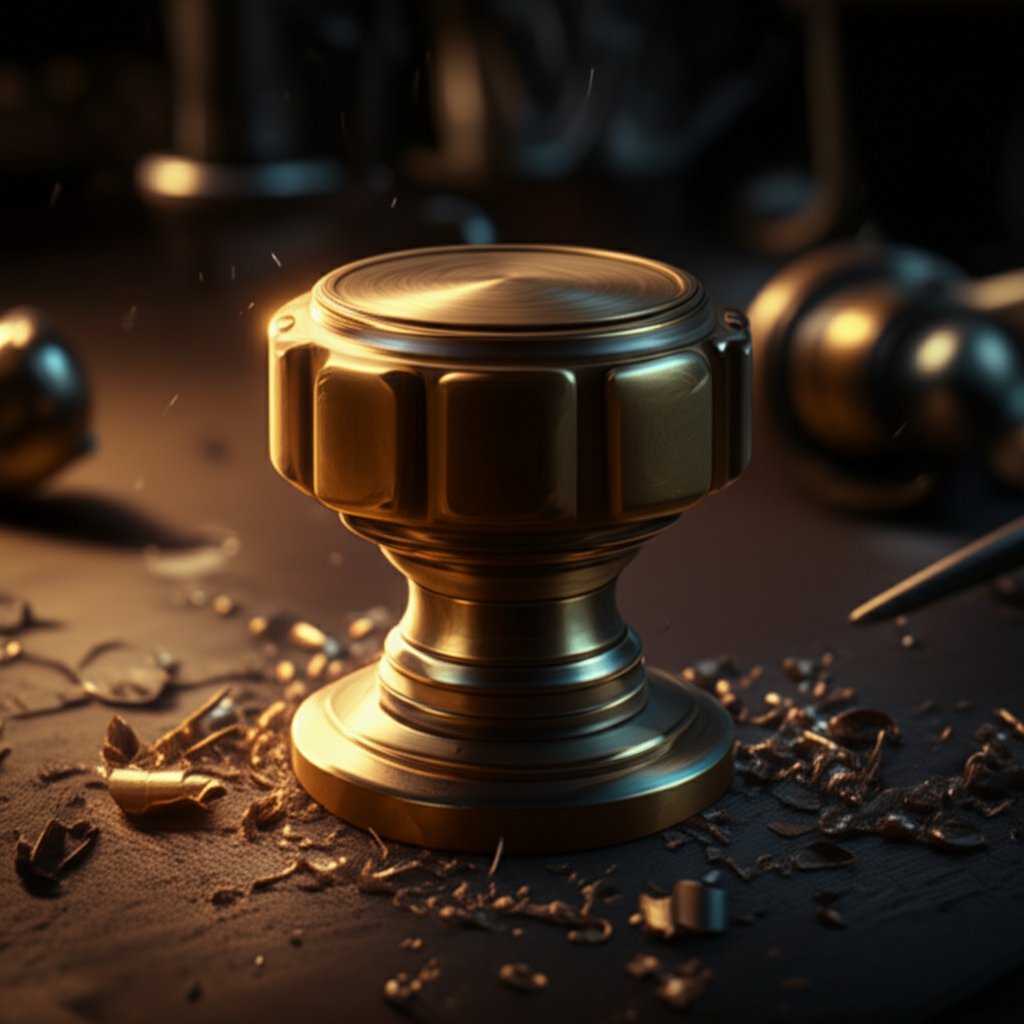
Custom Hardware and Precision Machining
When to Go Custom on Hardware
Ever found yourself searching for the perfect unlacquered brass appliance pull or a unique unlacquered brass cabinet knob—only to discover that standard sizes and shapes just don’t fit your vision? Custom hardware is the answer when off-the-shelf options can’t match historic profiles, oversized appliances, or the exact feel you want for your space. Imagine restoring a period home and needing an unlacquered brass bail pull to match original cabinetry, or designing a contemporary kitchen where only a seamless, extra-long unlacquered brass edge pull will do. In these moments, custom fabrication isn’t a luxury—it’s the key to function, fit, and design harmony.
CNC Precision for Solid Brass
Sounds complex? Here’s how it works: solid brass, prized for its durability and workability, can be milled with incredible precision using CNC (computer numerical control) machines. This process shapes raw brass into detailed hardware—whether it’s a streamlined unlacquered brass ball knob or a specialty unlacquered brass rod for a custom appliance pull. Precision CNC machining ensures crisp edges, smooth threads, and repeatable quality every time. Unlike casting, which can introduce subtle variances or soft details, CNC-milled hardware achieves tight tolerances for a flawless fit—ideal for both modern and traditional spaces.
If you’re considering a truly bespoke look, partnering with a CNC specialist is your best route. For example, XTJ offers precision CNC machining for custom brass pulls and knobs, delivering ultra-tight tolerances and consistent results—whether you need a single prototype or a full production run. Learn more about their capabilities at XTJ CNC Machining Services.
From Prototype to Production: The Custom Workflow
Curious about how a custom unlacquered brass cabinet knob or pull comes to life? Here’s a simple breakdown of the typical process:
- CAD Design: Your idea is translated into a digital model, capturing every detail and dimension.
- Prototype Creation: A single piece is machined to test form, fit, and feel—perfect for confirming that your unlacquered brass appliance pull or specialty knob matches your expectations.
- Precision Machining: Once approved, the final hardware is produced using state-of-the-art CNC equipment, ensuring every edge and thread is exactly as designed.
- Hand Finishing: Skilled artisans smooth, polish, and prepare the hardware, leaving it in a raw, unlacquered state for a true living finish.
- Installation: The finished piece is installed, ready to develop character and patina unique to your home.
Where to Source Custom Unlacquered Brass Hardware
Ready to take the next step? Here are three trusted sourcing paths for custom brass hardware projects:
- Precision CNC partner such as XTJ for custom brass pulls/knobs
- Local metal artisan for hand-forged accents
- Off-the-shelf components modified by a finisher
Custom machining delivers repeatable quality and design freedom—so your hardware fits your space as perfectly as your style.
Whether your project calls for a one-of-a-kind unlacquered brass cabinet knob, a matching set of unlacquered brass appliance pulls, or a specialty detail like a unlacquered brass edge pull, custom fabrication ensures you never have to compromise on fit or finish. Next, we’ll wrap up with key takeaways and a step-by-step plan for moving from inspiration to installation—so you can confidently bring your hardware vision to life.
Takeaways and Next Steps
Key takeaways for lasting beauty
Ready to bring the warmth and character of unlacquered brass hardware into your home? Before you make your final picks, let’s recap what truly sets this finish apart—and how you can make the most of it. Unlacquered brass cabinet knobs and pulls are more than just functional—they’re living details that evolve with every touch, splash, and season. The patina that forms is a testament to your home’s daily rhythm, not a flaw to be hidden. Choosing this finish means embracing change, and with the right care, your hardware will only grow more beautiful with time.
Patina is a living record of use—each mark and mellowed edge tells your home’s unique story.
Action plan: selection to maintenance
Feeling inspired, but not sure where to start? Here’s a straightforward, step-by-step plan to help you move confidently from dreaming to doing:
- Define your vision. Browse inspiration photos and decide if you prefer a vintage, lived-in look or a brighter, more polished style. Think about how unlacquered brass cabinet pulls, knobs, and door handles will complement your cabinetry and overall aesthetic (reference).
- Choose profiles and placement. Select a mix of unlacquered brass cabinet knobs, pulls, and possibly latches for different areas. Balance chunkier pulls with daintier knobs for a cohesive, inviting design.
- Confirm finish and budget. Decide if you want all hardware in unlacquered brass or if you’ll mix metals for a layered look. For those seeking affordable unlacquered brass hardware, explore a range of suppliers—there are quality options for every price point.
- Plan for care. Embrace the need for gentle, regular cleaning (soft cloth, mild soap, immediate drying) to keep your hardware aging gracefully. Document the initial finish with a quick photo for future reference.
- Install with care. Pre-drill holes for brass screws, avoid silicone residues, and handle each piece gently to prevent scratches. If you’re updating existing cabinets, take time to align and balance each knob and pull.
- Monitor and enjoy the patina. Watch as your unlacquered brass door handles and knobs develop character. If you ever wish to restore shine, a safe polish and optional wax will reset the look—no need for harsh chemicals.
- Source responsibly. For standard sizes, shop trusted hardware suppliers. If you need a precise fit or unique design, consider custom solutions. XTJ’s precision CNC machining services offer tight tolerances and prototyping for bespoke brass pulls or knobs—perfect when your project demands an exact match.
When to consider custom fabrication
Sometimes, off-the-shelf just doesn’t cut it. If you’re restoring an older home, matching historic profiles, or have cabinetry that calls for a unique touch, custom fabrication is worth exploring. Whether it’s an oversized unlacquered brass door knob or a specialty pull, custom machining ensures your vision is realized down to the last detail. And if you’re on the hunt for affordable unlacquered brass hardware but need something truly unique, working with a CNC specialist can deliver quality and precision without compromise.
- Gather measurements and inspiration images.
- Consult with a machining partner about your design and tolerances.
- Review prototypes and confirm fit before full production.
By following these steps, you’ll move smoothly from inspiration to installation—and enjoy hardware that tells your story for years to come. Unlacquered brass cabinet knobs, pulls, and door handles are a timeless investment, rewarding you with evolving beauty and daily satisfaction. Ready to get started? Let your hardware become a living part of your home’s legacy.
Frequently Asked Questions about Unlacquered Brass Hardware
1. Is unlacquered brass a good idea for home hardware?
Unlacquered brass is an excellent choice for those who appreciate hardware that develops a unique patina and character over time. It offers a living finish that evolves with use, making each piece one-of-a-kind. However, it does require more maintenance than lacquered options and will show fingerprints and water spots, so it best suits homeowners who enjoy a natural, changing look and are comfortable with routine care.
2. What should you avoid using on unlacquered brass?
To protect unlacquered brass, avoid harsh chemicals, bleach, ammonia-based cleaners, and abrasive pads. These can damage the surface or cause uneven patina. Instead, use pH-neutral soap, soft microfiber cloths, and ammonia-free brass polish for cleaning and maintenance.
3. How does unlacquered brass hardware change over time?
Unlacquered brass starts with a bright, golden finish that gradually darkens and develops a rich patina due to exposure to air, moisture, and touch. High-touch areas will age faster and show more tonal variation, while less-used spots remain lighter. The result is a warm, lived-in look that adds depth and personality to your space.
4. Where is unlacquered brass hardware best used in the home?
Unlacquered brass hardware is ideal for kitchen cabinets, interior doors, bathroom accents, and entryways. Its evolving finish pairs well with both traditional and modern cabinetry, adding warmth and timeless appeal to high-touch and decorative areas throughout the home.
5. Can I get custom unlacquered brass hardware for unique projects?
Yes, custom unlacquered brass hardware is available for projects requiring specific sizes, profiles, or historic details. Precision CNC machining services, like those from XTJ, can create bespoke brass pulls and knobs with tight tolerances, ensuring a perfect fit and a true living finish for your unique needs.
-
Posted in
brass hardware care, custom brass hardware, kitchen and bath hardware, patina timeline, unlacquered brass

